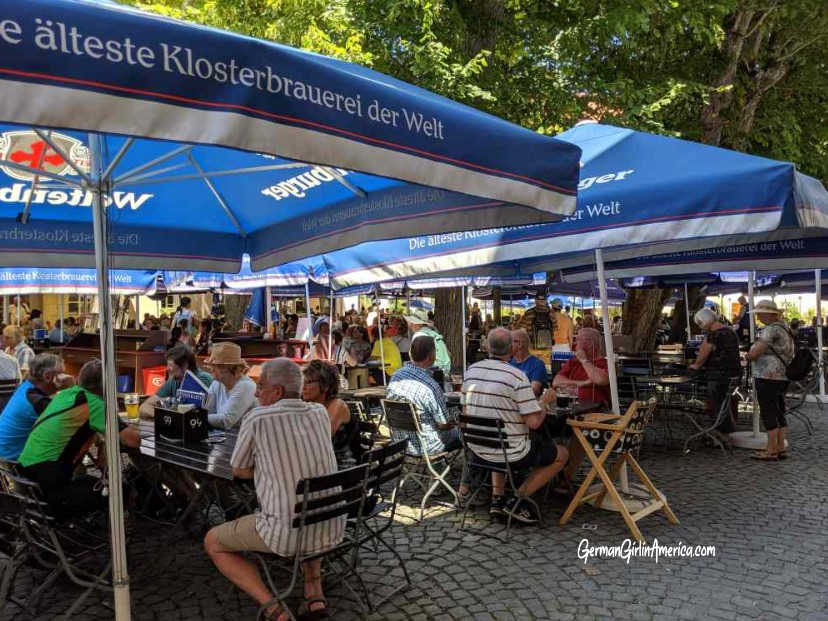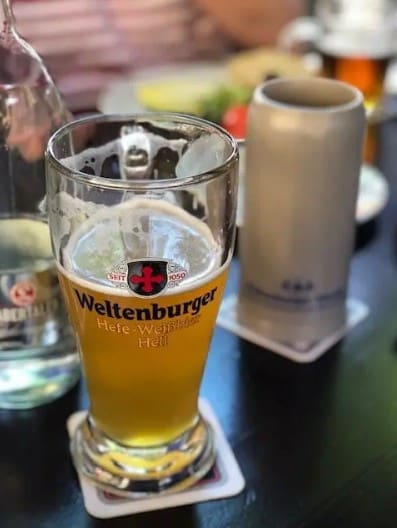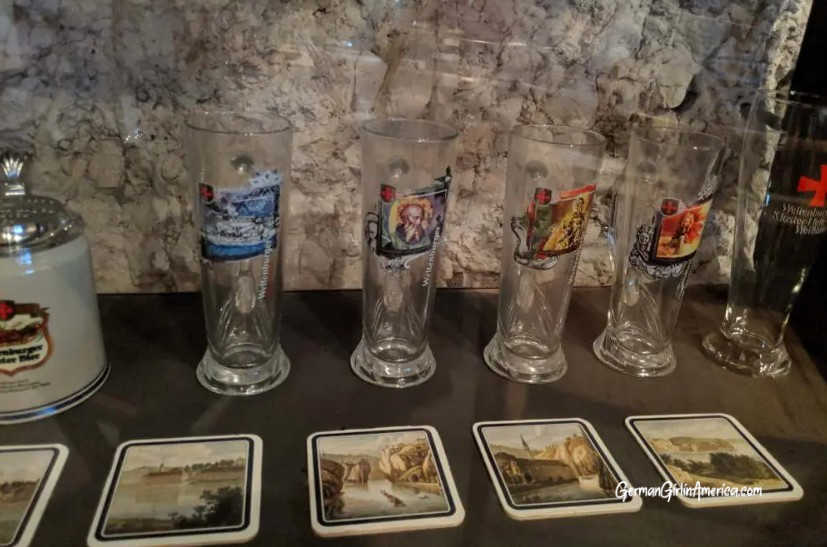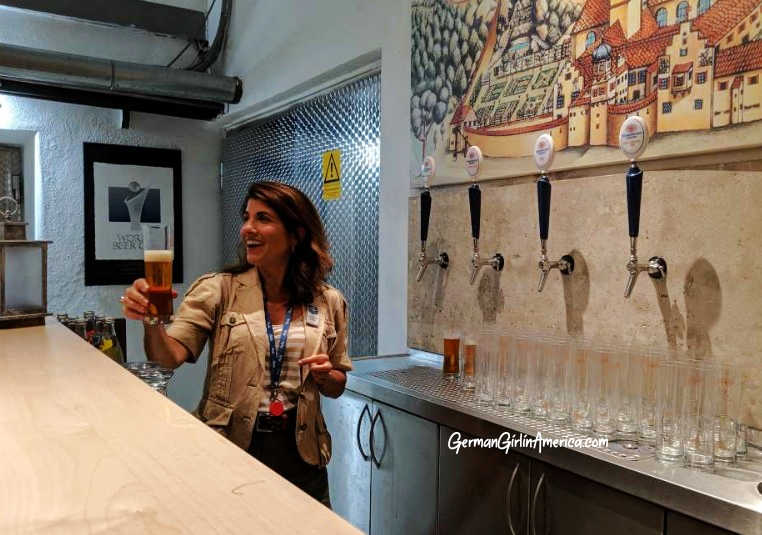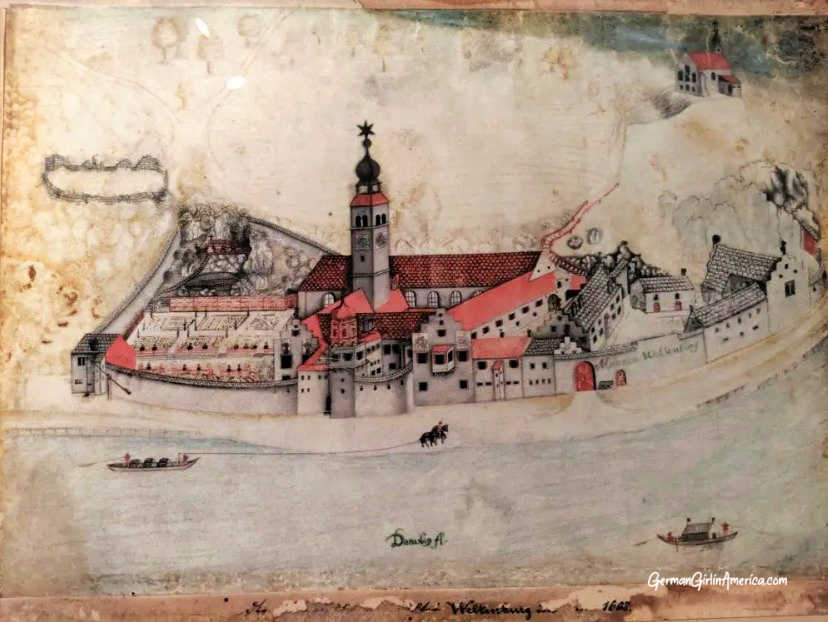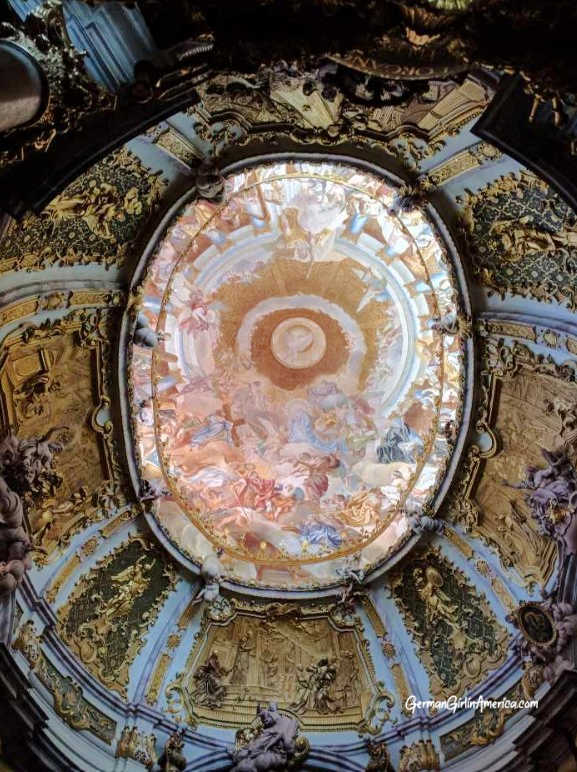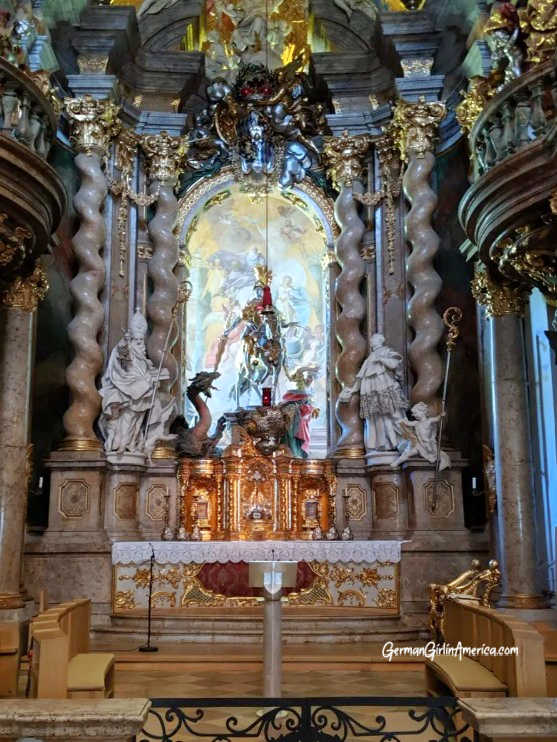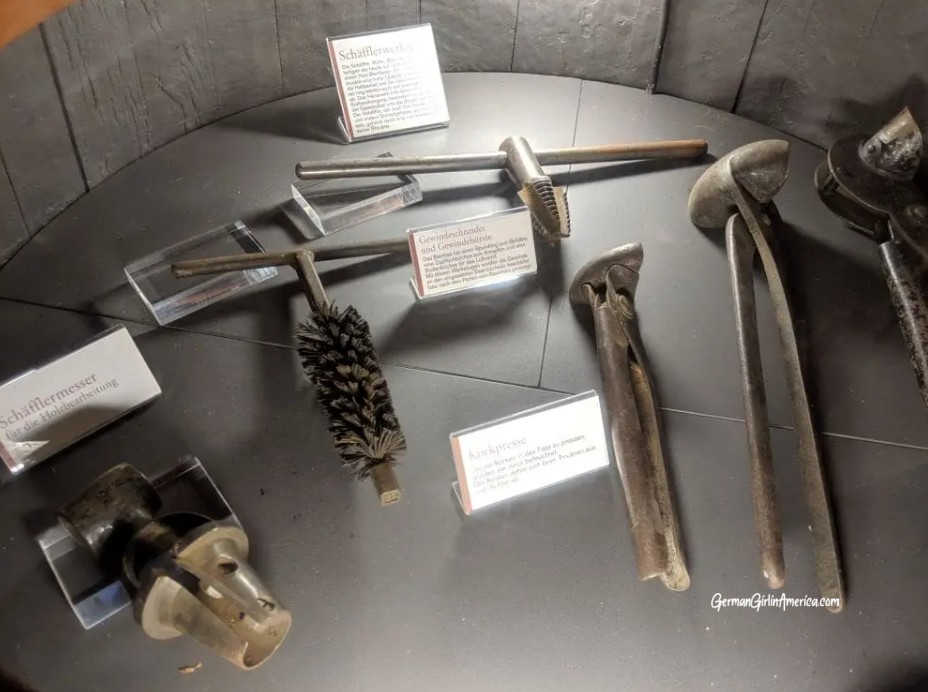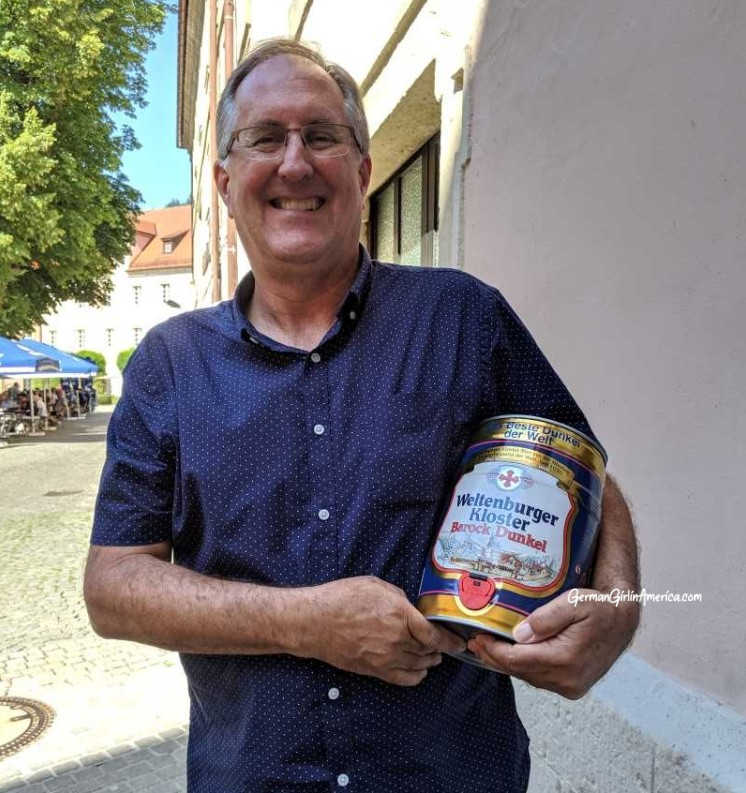Sitting somewhat precariously on the shores of the Danube not too far from Regensburg, you’ll find Weltenburg Abbey. I visited on a warm July day. The plan was to tour the Brewery, but I was delighted to learn that there is much more to see at the Benedictine Abbey than just big vats of beer (not that big vats of beer aren’t interesting…). The Abbey also houses a small museum and, even more exciting, an Asam church.
Kloster Weltenburg’s location on a gravel spit of land near the Danube Gorge makes it a tough place for floods. There are markings on the archway showing where the high water reached. Yet somehow, this monastery endured for nearly 1000 years, even losing its land for a while. Today, there are only a few monks left, but on a summer’s day, the Abbey grounds are bustling with activity.
A Visit to Weltenburg Abbey
You enter through a small archway, and suddenly, the courtyard opens in front of you. Visitors are welcome to enjoy the afternoon in the Biergarten, where rows of umbrella-shaded tables are set under large Linden trees. You can enjoy lunch or perhaps a delicious slice of cake. Ty the cheese, made by the monks in the Abbey’s dairy.
You should definitely try the beer.
Weltenburg Abbey Beer
There’s a mostly good-natured rivalry going on in Germany about who can lay claim to the oldest brewery. Weinhestephaner brewing dates back to 1040 CE, but monks have brewed Weltenburger Abbey beer since 1050 CE, and the Abbey foundations on the shores of the Danube date back to the 700s. Ultimately, whether those 10 years make a difference is entirely up to you.
The Weltenburg Abbey Beer Tour shares the history of brewing on the site. Currently, they brew four different beers. Weltenburger Kloster Barock Dunkel (Winner of the World Beer Cup award in 2004, 2008, and 2012 for best Dunkel), 1050 (referring to the date of the first brew), Helles, and Weißbier. You can taste each of them in the very cool beer-tasting cellar. Tour the on-site brewery (you can reserve a tour here).
Weltenburg Abbey
Don’t feel like a beer tour? Visiting the Weltenburg Kloster is more than just a chance to drink beer.
According to the Abbey’s history, the foundations of the Weltenburg Abbey date back to circa. 610 CE by Agilolfing Duke Tassilo I, making it the oldest monastic foundation in Bavaria. There is “evidence of human habitation on this site by the Danube dating from the Neolithic Age (4500-3500 BCE).
In the 8th century, the Benedictine order took over the space, began brewing beer in 1050, and consecrated a church on the site in 1191. (Interesting how the beer predated the church.) Then in 1713 when Abbot Maurus Bächl took over. A strong leader and organizer, he breathed new life into the order. And this is the exciting part: he brought in the painter Cosmas Damian Asam to update the simple rectangular church.
The Church Gets a Redesign by the Asam Brothers
Cosmas took the ball and RAN with it. First, he reshaped the nave (the central part of the church where the people sit) into a domed ellipse. Then, he painted frescos with stories of the spread of Christianity across the globe.
Something interesting for Americans- 12 Benedictine monks traveled with Columbus on the Santa Maria, so the spread of Christianity to the Americas is depicted in the artwork.
He also added an apse (the end of the church for clergy) on the east end to get more dramatic space for the altar. Then Cosmas brought in his sculptor brother Egid Quiri Asam to build massive sculpture of St Georg slaying a dragon, which dominates the space.
St George and the Dragon
As most Asam works, the church is simply breathtaking. (Read more about the Asam Brothers here) You can’t just walk through and say, “I’ve seen it.” Sit and look up. The Asam brothers, and later Cosmas’s son Franz, covered every surface with a story. Paintings, Friezes (dimensional sculptures on the wall), and Sculptures (even one of Cosmas himself laughing down at you!). Color and gold. I try to imagine what it must be like for the monks, then and now, to sit in that place and experience the history of Christianity all around you.
Changes for the Monastery
From 1804 to 1812, Germany underwent a period of secularization and mediatistation. Many small principalities from the Holy Roman Empire coalesced into larger states (basically, it went from over 300 to just 39), and a lot of religious entities lost their status and became secular. The brewery and much of the land surrounding the Kloster were sold off. The church itself became a parish church for the area.
Then, in 1841, King Ludwig I (the Oktoberfest king) gave the Benedictines their charter back. The Weltenburg Kloster went back to being an Abbey.
Kloster Museum
The museum may be small, but it’s a pleasant place to escape the heat on a warm day. The history of the Abbey is laid out. There are old books and vestments, as well as old tools used in brewing.
I found the exhibit detailing how the work was done in the church fascinating. The unfinished sculptures showed how the plaster covered the straw. And you could see the layers needed to paint the many murals.
Visiting the Weltenburg Kloster
Today, only 7 Monks live on the grounds (they must rattle around a bit). The Abbey Biergarten is open during the summer months, and people are welcome to enjoy themselves in the beautiful surroundings. The small sand beach makes it possible to wade or swim in the Danube, or you can enjoy an Eis on a warm day.
For information about visiting the Weltenburg Abbey, check out their Website –> Visiting the Weltenburg Abbey
Kloster Weltenburg sits just 5 Kilometers from Kelheim, approximately 30 minutes southwest (by car) from Regensburg. Be aware that the parking lot is a 10-minute walk from the entrance, and you will walk between a wall and the street.
Spend the Night within the walls of Kloster Weltenburg.
“Gästehaus St. Georg – Weltenburger Klosterbetriebe GmbH provides modern but functionally furnished rooms. A rich buffet breakfast is available each morning. And a recreation room where guests can enjoy Weltenburger beer specialties. There is also a traditional Klosterschenke lounge with a beer garden. The property also offers meals made from fresh produce from the region. Guests are also welcome to use the reading room where there is a selection of daily newspapers, nonfiction, and fiction.”
Click HERE for images of the rooms.
Gästehaus St. Georg – Weltenburger Klosterbetriebe GmbHBooking.com
And maybe on your way out, you can grab a go-cup (or small barrel) of Weltenburger Abbey Beer
You could also take an excursion to Kloster Weltenburg from Regensburg or Munich
Regensburg: Day Trip to the Danube Gorge in WeltenburgGet Your GuideExclusive Bavarian beer tastings with Danube cruise from MunichViator


